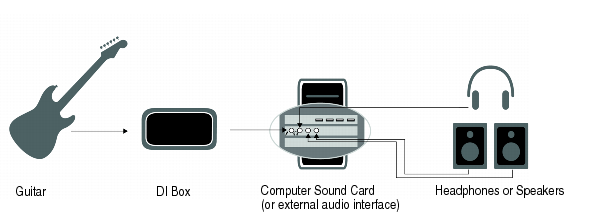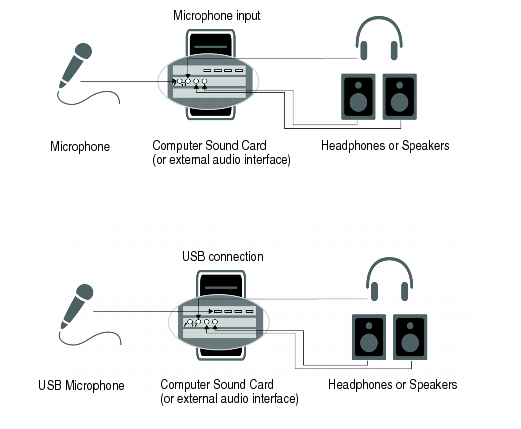There are several types of audio interfaces (soundcards). CardBus (PCI), USB/USB2 and FireWire are the most common. Laptops can use an audio PCMCIA card. Many audio interfaces also have MIDI inputs and some have built in MIDI synthesizers as well. This section covers the various audio connection options.There are two basic types of audio inputs, analog and digital. Analog inputs allow you to connect a guitar, mic or other instrument to your computer directly. The audio interface converts the analog input to digital. Digital inputs allow other digital devices to connect directly to your computer. Common digital inputs include external analog to digital converters, popular guitar processors like the Line 6 POD, and other digital recording systems like the ADAT decks. Analog inputs are very common, and are standard in virtually all consumer sound cards (the ones that come with your computer). Digital inputs are becoming more popular and are very common on professional and mid-level, “prosumer” interfaces. Analog inputs allow you to record a mono or stereo signal (assuming you have a stereo input) while digital inputs allow you to record 1 to 8 signals depending on the type of digital connection.The following table describes the various types of analog and digital connections you may encounter.






Tip - Searching Documentation
Tip: To search for a specific topic, type your search query in the Search Cakewalk.com field at the top right of this page.
When the search results appear, click which product's documentation you would like to search to filter the search results further.
Note - Using Offline Help
Note: If you prefer to always use offline Help, go to Edit > Preferences > File > Advanced in your Cakewalk software and select Always Use Offline Help.
If you are not connected to the internet, your Cakewalk software will default to showing offline help until an internet connection becomes available.





